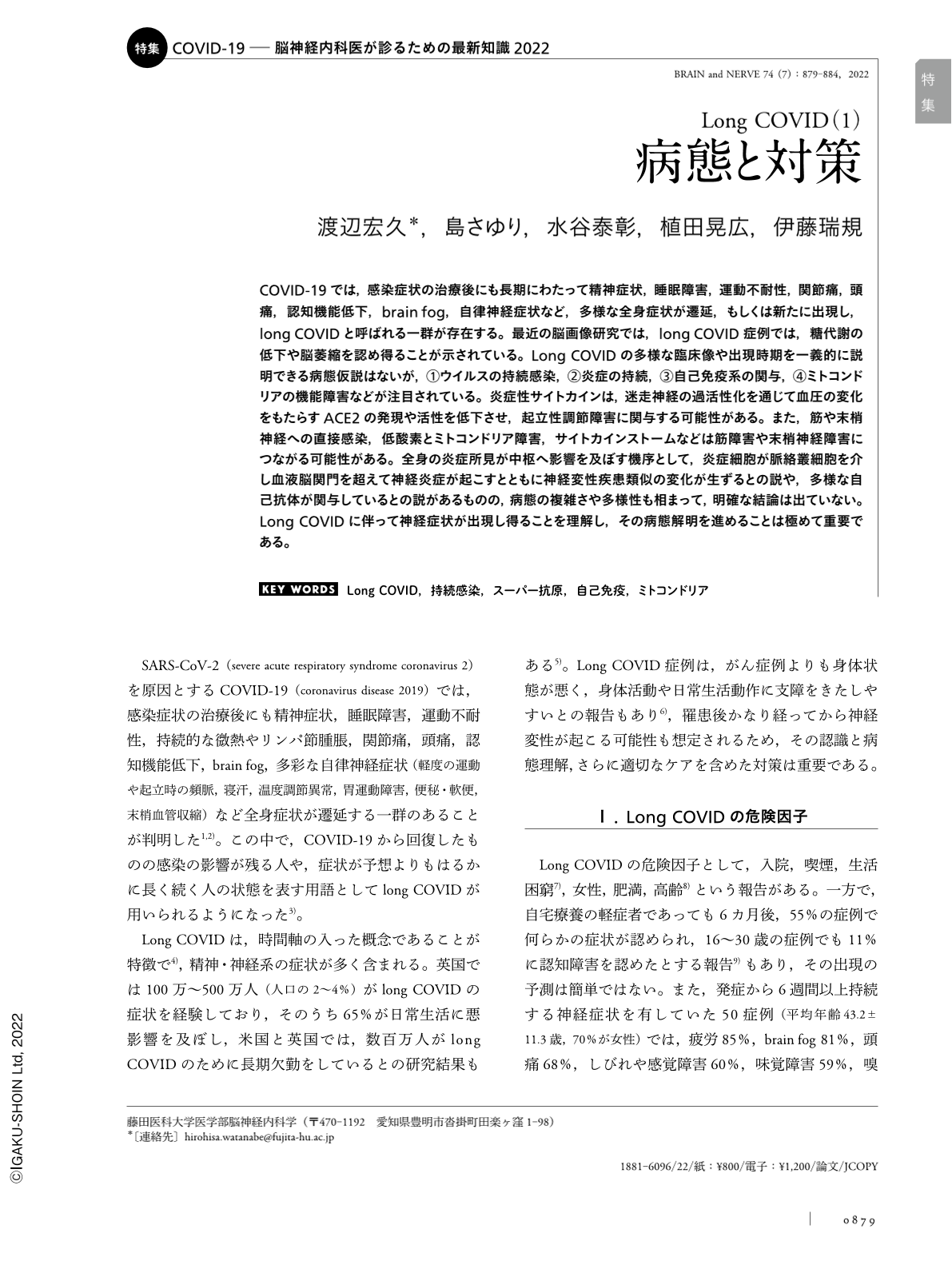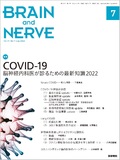Japanese
English
- 有料閲覧
- Abstract 文献概要
- 1ページ目 Look Inside
- 参考文献 Reference
COVID-19では,感染症状の治療後にも長期にわたって精神症状,睡眠障害,運動不耐性,関節痛,頭痛,認知機能低下,brain fog,自律神経症状など,多様な全身症状が遷延,もしくは新たに出現し,long COVIDと呼ばれる一群が存在する。最近の脳画像研究では,long COVID症例では,糖代謝の低下や脳萎縮を認め得ることが示されている。Long COVIDの多様な臨床像や出現時期を一義的に説明できる病態仮説はないが,①ウイルスの持続感染,②炎症の持続,③自己免疫系の関与,④ミトコンドリアの機能障害などが注目されている。炎症性サイトカインは,迷走神経の過活性化を通じて血圧の変化をもたらすACE2の発現や活性を低下させ,起立性調節障害に関与する可能性がある。また,筋や末梢神経への直接感染,低酸素とミトコンドリア障害,サイトカインストームなどは筋障害や末梢神経障害につながる可能性がある。全身の炎症所見が中枢へ影響を及ぼす機序として,炎症細胞が脈絡叢細胞を介し血液脳関門を超えて神経炎症が起こすとともに神経変性疾患類似の変化が生ずるとの説や,多様な自己抗体が関与しているとの説があるものの,病態の複雑さや多様性も相まって,明確な結論は出ていない。Long COVIDに伴って神経症状が出現し得ることを理解し,その病態解明を進めることは極めて重要である。
Abstract
A group of patients with coronavirus disease 2019 (COVID-19) exhibited various persistent or new systemic symptoms, including psychiatric symptoms, sleep disturbances, exercise intolerance, arthralgia, headache, cognitive decline, brain fog, and autonomic symptoms, all of which persisted long after the resolution of infectious symptoms. Several imaging studies have shown that long COVID cases present with decreased glucose metabolism and progressive brain atrophy. Although no single pathological hypothesis thoroughly explains the varied clinical presentations and timings, the following have attracted attention: 1) persistent viral infection, 2) persistent inflammation, 3) involvement of the autoimmune system, and 4) mitochondrial dysfunction. In all these hypotheses, inflammatory cytokines may be involved in orthostatic dysregulation by decreasing the expression and activity of ACE2, consequently changing the blood pressure through vagus nerve hyperactivation. Myopathy and peripheral neuropathy may also be caused by direct infection of the muscles and nerves, hypoxia, mitochondrial damage, and cytokine storm. Furthermore, multiple theories regarding the mechanisms by which systemic inflammatory findings affect the central nervous system have been postulated, including neuroinflammation caused by inflammatory cells crossing the blood-brain barrier via choroid plexus cells and the involvement of various autoantibodies. Despite these findings, no definitive consensus has been reached due to the complexity and diversity of COVID-19 pathophysiology. Thus, it is essential to understand the neurological symptoms and pathophysiology involved in long COVID.

Copyright © 2022, Igaku-Shoin Ltd. All rights reserved.


